
Seaweed Seaweed China Professional Manufacture Seaweed Extract Organic Fertilizer Fruit And Vegetable Planting




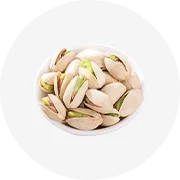

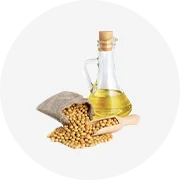


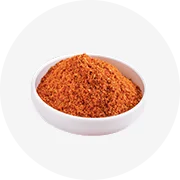
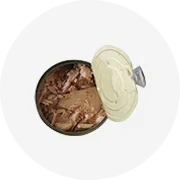
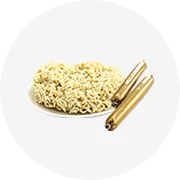

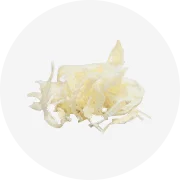





Seaweed refers to diverse species of macroscopic, multicellular, marine algae that inhabit the world's oceans, seas, rivers, and lakes. These aquatic plants play a vital role in marine ecosystems, providing food and shelter for marine life, and contributing to the balance of marine biodiversity. Seaweed is not just an integral component of the marine environment but also a valuable resource for humans. It serves as a nutritious food source rich in vitamins, minerals, and fibers, and is used in various culinary traditions around the globe, most notably in Asian cuisines.
The harvesting of seaweed can be done through wild collection or aquaculture (seaweed farming), with each method adhering to certain principles to ensure sustainability and quality. The seaweed industry caters to different market segments including the food industry, agriculture, cosmetics, and pharmaceuticals. For those in the food and beverage sector, it is often used as an ingredient in dishes like sushi or as a seasoning, while in agriculture it is utilized as an organic fertilizer due to its nutrient-rich composition.
Understanding how seaweed works involves recognizing its growth patterns and environmental requirements. Seaweed thrives in nutrient-rich waters where it can photosynthesize effectively. This growth process is harnessed by seaweed farmers who cultivate seaweeds in controlled environments to meet commercial demands. In wild collection, harvesters gather naturally occurring seaweeds from their habitats ensuring not to overharvest and disrupt the local ecosystem.
The diversity of seaweed is immense, with each type exhibiting unique characteristics and applications. Here are some common varieties:
Nori: Often used in Japanese cuisine for wrapping sushi rolls or onigiri (rice balls), nori is a red algae that turns dark green when dried. It's known for its crisp texture and umami flavor.
Kelp: A type of brown algae that includes several species like kombu. Kelp is commonly used in soups and stews or as a savory seasoning. It's also processed into kelp extract for use in various products.
Sea Grapes: Also known as green caviar, sea grapes have a distinctive texture that pops in your mouth. They are typically served fresh or lightly pickled alongside other dishes.
Eucheuma cottonii: This type of red algae is often farmed for carrageenan, a thickening agent used in the food industry.
Wakame: A subtly sweet and tender seaweed often found rehydrated in salads or added to soups.
Each variety has its own set of common use cases which can range from direct consumption as a snack or part of a meal to functional uses such as thickening agents or nutritional supplements.
For businesses purchasing seaweed on Alibaba.com, several considerations should be taken into account to ensure they select the right product for their needs:
Type: The specific variety of seaweed will have implications on taste, texture, and potential uses. For instance, if sourcing for a restaurant specializing in sushi, nori would be the appropriate choice.
Processing Type: Consider whether you need seasoned or flavored seaweed, or if you prefer it natural to provide your own seasonings. Also decide between different processing methods like drying or steaming which affect the final product's characteristics.
Cultivation Type: Whether you prefer common cultivation methods or specific farming practices can influence your choice.
Packaging: Depending on your business's scale and distribution methods, you might need bulk packaging or prefer individually packaged products for retail purposes.
Storage Conditions: Ensure you have the right facilities to store the seaweed properly based on seller instructions to maintain freshness and longevity.
Quality Grades: Seaweed comes in different grades reflecting its quality and purity. Selecting the appropriate grade is crucial for ensuring customer satisfaction if the seaweed is being resold or incorporated into dishes.
Businesses should also factor in the certifications and testing results provided by suppliers on Alibaba.com to ensure they meet industry standards and regulations applicable to their operation.
Alibaba.com stands as an expansive marketplace connecting buyers with an array of global suppliers offering diverse types of wholesale seaweed. The platform excels in providing businesses with a broad selection of seaweeds that cater to various commercial needs ranging from culinary applications to health products. With suppliers showcasing their goods through detailed descriptions and specifications, businesses can make informed decisions when selecting products that align with their particular requirements without compromising on quality.
The assurance provided by Alibaba.com's Trade Assurance service adds confidence to transactions by safeguarding payments until buyers confirm receipt of their orders as described. This level of protection fosters trust and reliability within the purchasing process. Additionally, the platform's user-friendly interface simplifies navigation and purchase procedures while offering features such as mobile compatibility and multilingual communication support—enhancing accessibility for buyers across different regions.
By utilizing Alibaba.com's vast network of verified suppliers along with its customer-centric services and tools designed for ease-of-use, businesses have an effective avenue for sourcing wholesale seaweed tailored to their specific needs. This enables companies not only to fulfill their immediate procurement requirements but also supports their long-term growth by connecting them with high-quality products from reputable sources worldwide.
The most popular types of seaweed for culinary uses include Nori, used extensively in sushi; Wakame, known for its role in salads and soups; Kelp, which is often added to broths for umami flavor; and Sea Grapes, which are appreciated for their unique texture in fresh dishes.
Quality of seaweed can be assessed by its appearance, texture, and taste. High-quality seaweed should have a vibrant color appropriate to its type, a consistent texture without any signs of spoilage, and a fresh, oceanic taste without any off-putting odors.
Seaweed should generally be stored in a cool, dry place away from direct sunlight. Some processed seaweeds require refrigeration after opening. Always check the supplier's storage recommendations to ensure product longevity and quality.
Yes, there are different grades of seaweed available, usually denoted as A, Food grade, or 1. The grading can indicate the purity, size, and overall quality of the seaweed, which in turn affects its pricing and suggested uses.
The processing type such as drying, steaming, or seasoning can significantly impact the flavor, texture, and application of seaweed. For example, dried seaweed is often used for longer shelf life and ease of transport while seasoned or flavored varieties are ready-to-use as snacks or ingredients.
Yes, there are suppliers on Alibaba.com that offer organic or sustainably harvested seaweed. Look for certifications or cultivation type descriptions from suppliers to ensure that the product meets your sustainability criteria.
Seaweed can be packaged in various forms including bulk packs, vacuum packs, boxes, sachets, and more. The choice of packaging should align with your business needs in terms of quantity, protection of the product, and convenience for end-users.
Wild-harvested seaweed is collected from its natural environment whereas farmed seaweed is cultivated in controlled settings. Farmed seaweed can offer more consistency in supply and quality control while wild-harvested may have variations due to environmental factors.
When sourcing seaweed, look for certifications that validate food safety standards such as HACCP, ISO, or Organic certifications. These certifications ensure that the products have been produced and handled according to internationally recognized practices.
It's important to communicate clearly with suppliers about the taste profile you're looking for. If possible, request samples to taste test before purchasing in bulk to ensure that the flavor aligns with your menu or product requirements.
Different varieties of seaweed are used differently in food products; Nori is commonly used in sushi rolls and snacks; Wakame is favored in salads and soups; Kelp is integral in broths and seasonings; Eucheuma cottonii is often utilized as a thickening agent in desserts and dairy products.
Yes, you can purchase flavored or seasoned seaweed varieties which are pre-prepared with spices or condiments and are ready for immediate use in dishes or as stand-alone snacks.
The drying process can affect the nutritional content by reducing moisture which concentrates flavors and nutrients but may also decrease levels of certain heat-sensitive vitamins. Always check with suppliers regarding nutrient preservation during processing.
Some processed seaweeds may contain additives such as preservatives or flavor enhancers. It's important to review ingredient lists provided by suppliers to ensure they meet your product standards and regulatory requirements.